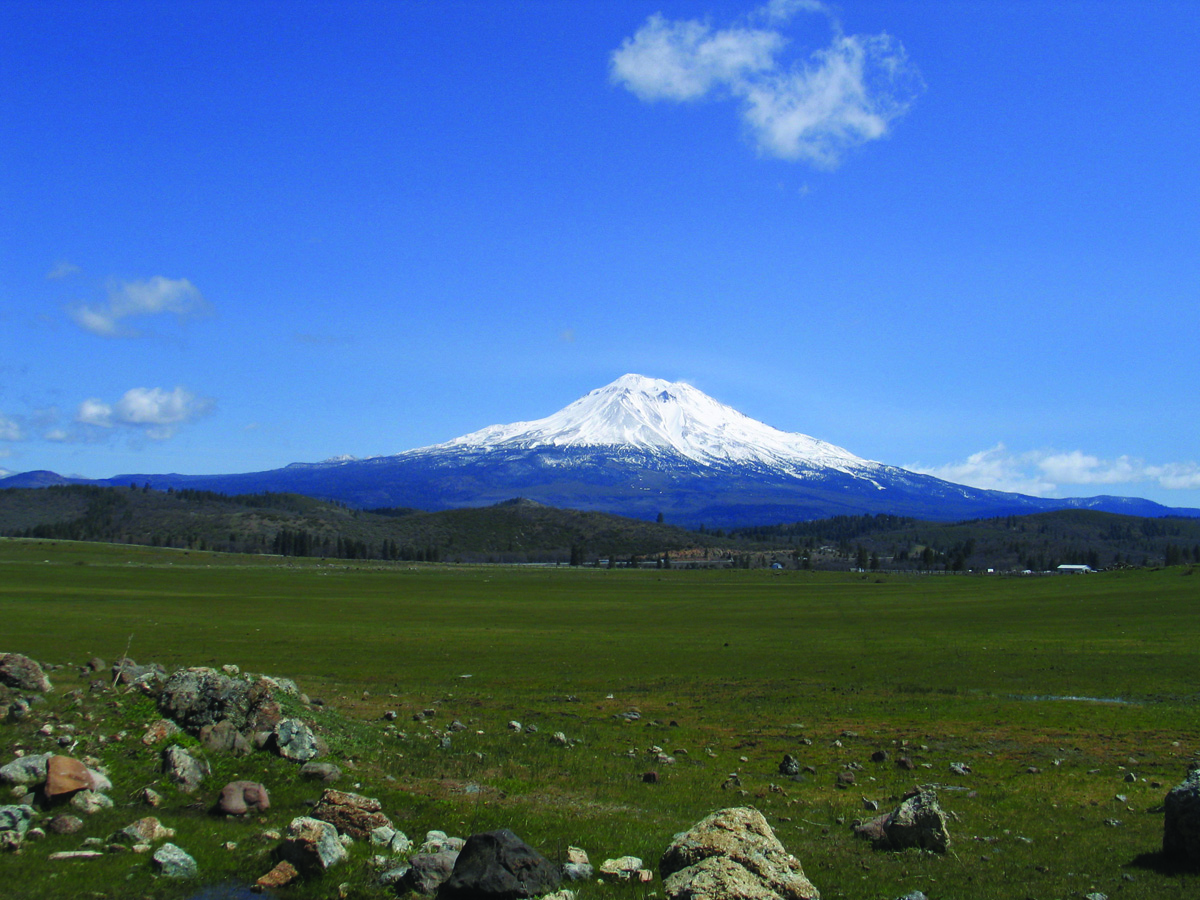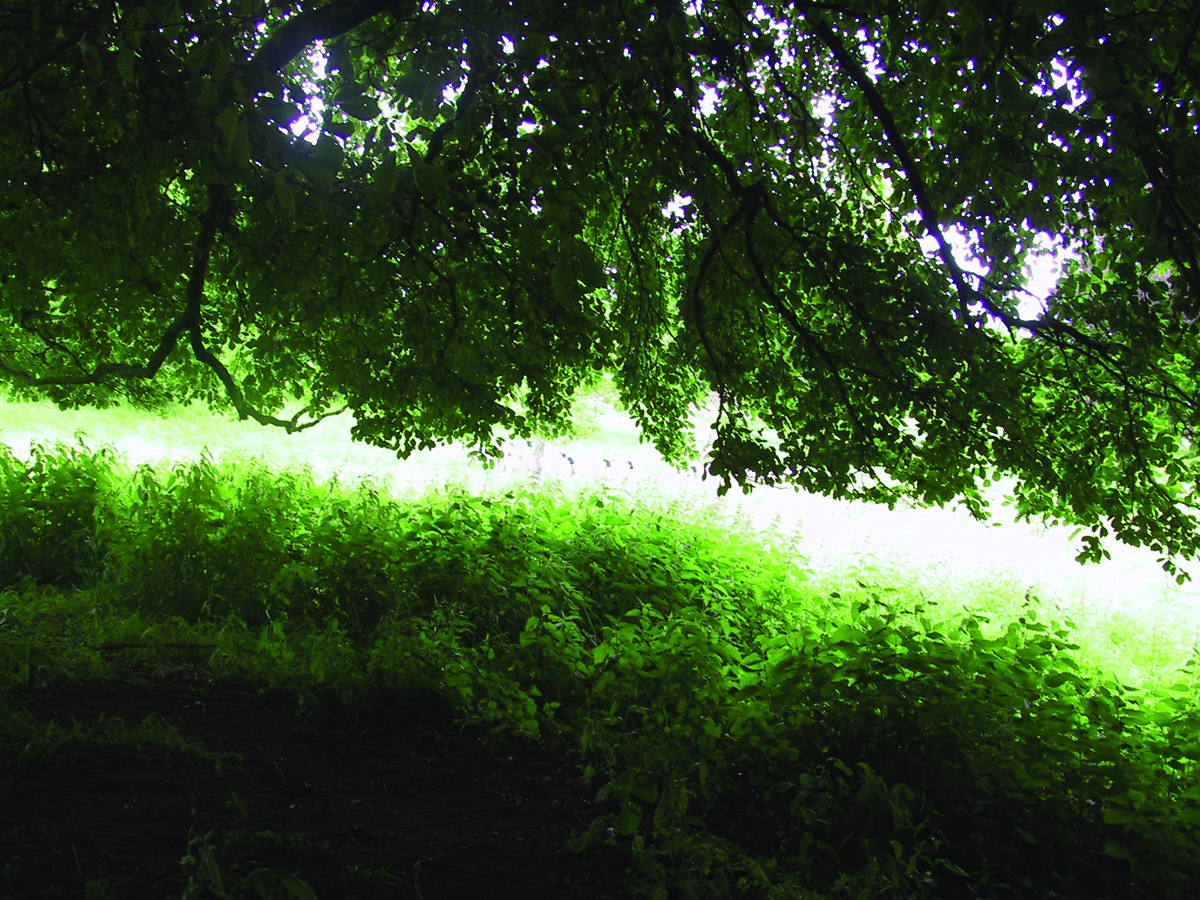Can art heal?
by Jemma Everyhope-Roser

Prospect
In prospect images, there’s real or symbolic access to a view. Usually vegetation grows low, and trees, if present, tend to be horizontally branched. The sky is an aching blue. Any water lies still as a mirror. “If you’re a hunter-gatherer,” Ellen Vincent (below) explains, “being able to see what’s around you can help you live longer.”
Health and nature has been an ongoing theme in Ellen Vincent’s life. An environmental landscape specialist, Vincent has heard in focus groups, again and again, that people retreat to trees when stressed. So Jay Appleton’s prospect-refuge theory resonated for Vincent.
The theory, which Appleton developed by examining landscape paintings and finding common elements, posits that viewers respond to landscapes as hunter-gatherers would. Appleton stated, in his book, that some of the most pleasing landscapes mix “prospect” and “refuge.” And Vincent was not aware of any research done on mixed prospect-refuge images.
In Clemson’s doctoral program, planning and design in the built environment, Vincent found funding for hospital research in the interdisciplinary architecture + health division through Dina Battisto. Vincent, excited to develop a rigorous methodology, set out to construct a study. A photographer herself, Vincent decided to work with images because “they’d make for clean research.”
Vincent gathered hazard, prospect, and refuge images—but she also collected mixed prospect-refuge images. Even though an image may be mixed, Vincent explains, “It doesn’t necessarily have to be fifty-fifty in terms of spatial quality, but in terms of impact, we’re striving for equal impact. So it will be perceived slightly differently by different people.”
She achieved that equal impact through focus groups and sorting tasks.
After assembling over three hundred images from various sources, Vincent then narrowed that down to seventy-two images that exemplified the prospect-refuge theory. Vincent gathered focus groups on campus, mostly of professionals, to categorize the images. Once Vincent developed a survey criteria, she recruited college students to sort and rank the remaining twenty images.
A mix that relieves pain
At the college campus facility, Vincent tested images’ effect on students, simulating stress by placing the students’ hands in ice water for up to two minutes. “What we found from our study at the university, our pilot trial, that it was the mixed prospect-refuge image that had the most significant impact on sensory pain perceptions,” Vincent says.
So Vincent selected the images of highest impact for use at the hospital.
There, Vincent studied inpatients and outpatients. Outpatients had a small eight-by-ten-inch image on a gooseneck clip that they viewed before and after surgeries. For the inpatients, Vincent posted a three-by-two-feet image on the wall for two days. The staff surveyed the patients three times a day for perceived pain, profile of mood states, and heart rate and blood pressure.
“People who had images displayed less pain and better moods than people who did not have images,” Vincent says.
When asked about the real-world ramification of her research, Vincent explains hospitals use many criteria when selecting art. Sometimes, for example, choosing a local artist’s work may foster community but may not be the best choice for the patients.
Hospitals can be stressful—for patients, visitors, and staff. Vincent hopes that hospital administrators use this information to make educated decisions regarding décor. Or, as Vincent puts it: “If you choose works that make people generally feel better, then that’s a good thing.”

Refuge
“Refuge is the opposite of prospect,” Vincent says, “in that it represents real or symbolic situation for hiding or sheltering.” “Hides” protect the viewer from animals or people. “Shelters” tend to be structures that protect from inclement weather. Refuge images are also associated with dim light, climbable trees, fences, and buildings with windows.
The images used in clinical research were not provided for copyright reasons, but each photograph appearing was used in the focus groups and experimental sorting. Ellen Vincent took and provided all photos.
Ellen Vincent is an environmental landscape specialist and an extension associate in the School of Agriculture, Forest, and Environmental Sciences, College of Agriculture, Forestry, and Life Sciences. Her sources of funding include Department of Defense, which is courtesy of Dina Battisto, and the South Carolina Forestry Commission. Jemma Everyhope-Roser is the editorial assistant at Glimpse.



